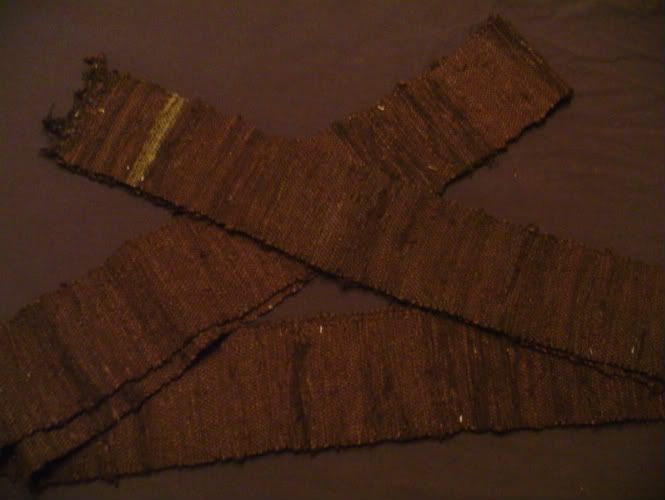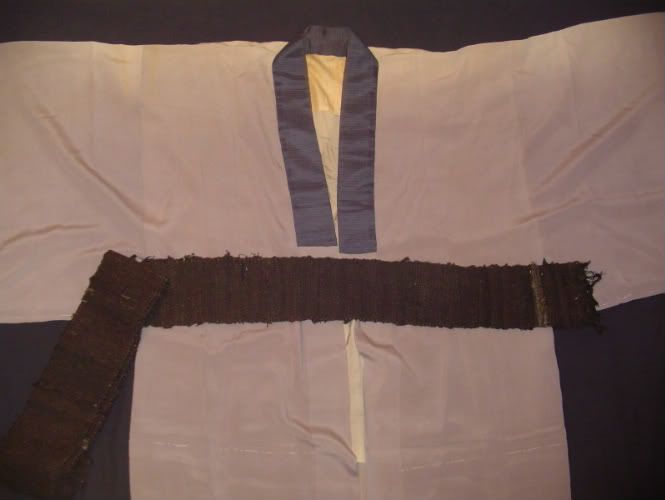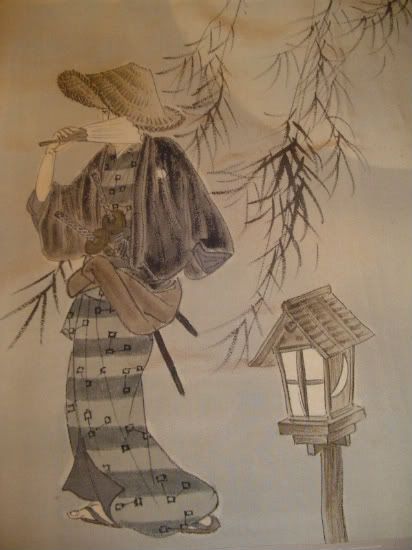First I got a kaku-obi, a type of sash for men that ties the kimono. This one, from around 1910, is unique because it is done in a rustic woven style, the type of which was very popular in my home prefecture.

As if that weren't enough, something to encourage me to wear it with. This is a juban, which is basically underclothes for a kimono.

Like yukata (more casual kimono made of cotton), the juban can also be worn by itself when exiting the bath, or lounging around the house. But of course, unlike the yukata, you would not wear it alone out in public. It goes under your kimono. Obviously, I don't go out in kimono here, but I do like to lounge around the house in light clothing when it's unbearably hot, so I guess I'll put this outfit to good use and fulfill my mother's dream of my being more traditional.
The great thing about juban for men (or the interiour of kimono for women) is that, since nobody is going to see it under your kimono, you are free to put whatever gaudy or strange style, pattern, or picture you like on it. There's no need for subdued formality in your underwear, since only you and a select few people close to you may ever see it. That's right, even before the Harajuku scene became internationally popular, even before all the teenagers in Shibuya were forming new styles of fashion to represent themselves, back in the day, men in the Edo period were expressing themselves through fashion by going all-out via an exquisite pattern or special image on their underclothes, so they could feel who they were, even when wearing the same uniform or required modest kimono as everyone else.
This particular one is from the 1920s, and on the back it boasts a great ukiyo-e print-style image of a samurai standing beside a traditional lamp, waiting for someone in the moonlight.


Pretty sweet, huh?
No comments:
Post a Comment